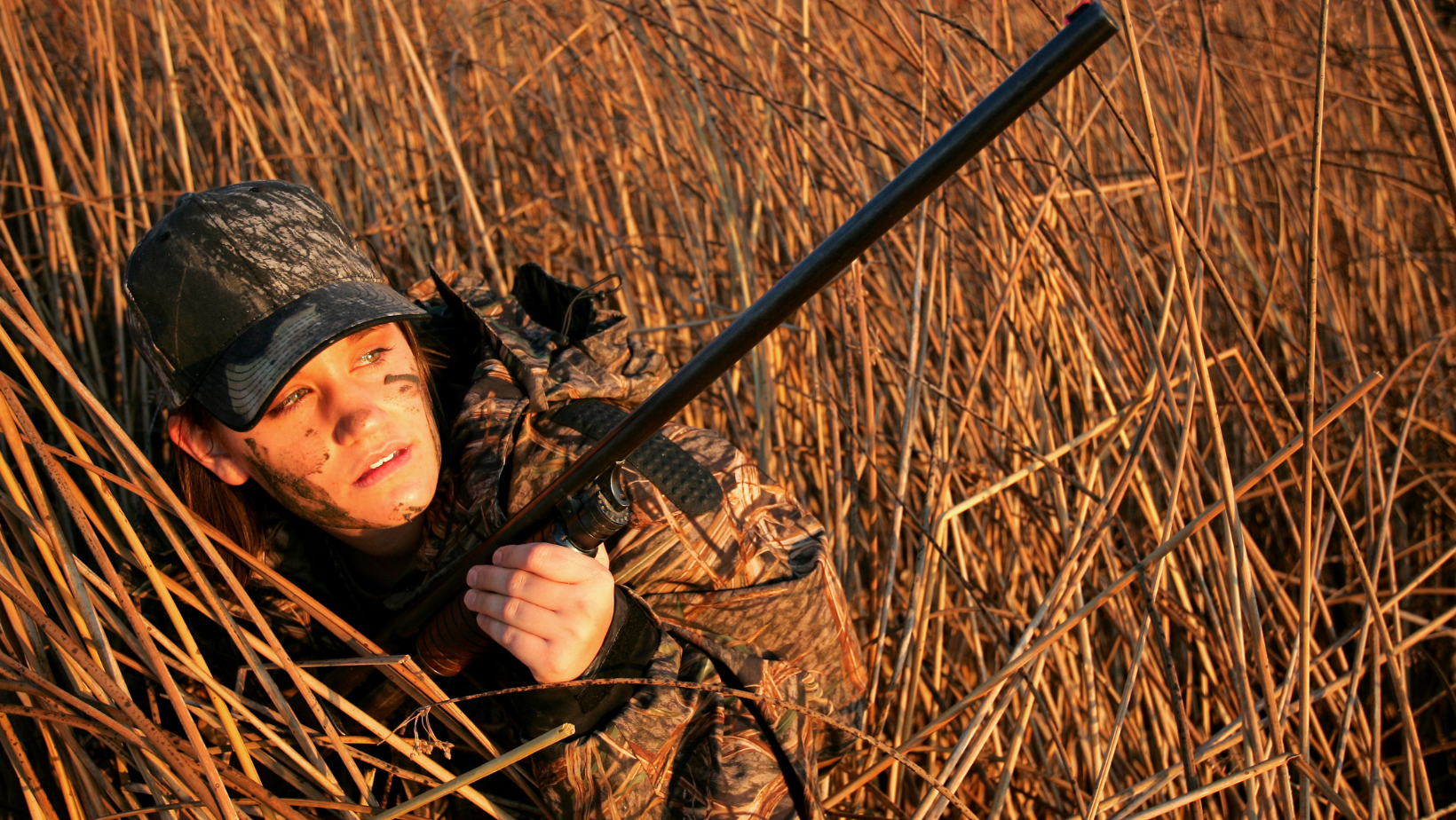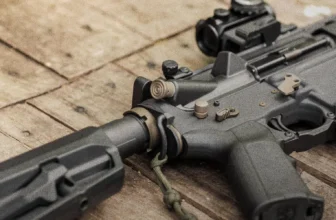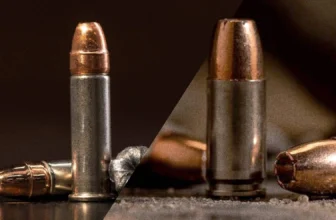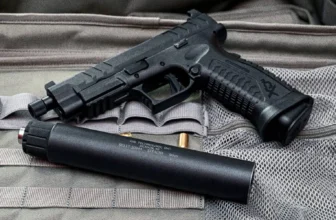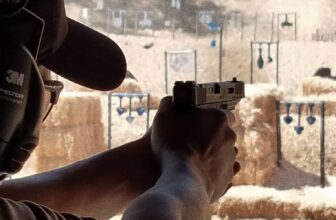You’ve heard the name “.38” before. But did you know that .38 Special and .38 Super are two entirely different beasts?
Spoiler: The .38 Super is a semi-auto round, while the .38 Special is rimmed for revolvers. They are not interchangeable. Read on to understand the major differences anyway so you don’t look like a noob at the range.
The .38 Special is an iconic revolver round, slow but steady, and has stood the test of time for over a century. Meanwhile, the .38 Super is a high-powered, semi-auto cartridge that packs a serious punch.
So, what’s the difference? Which one should you use? And most importantly, why do both still exist? Let’s dig in.
A Tale of Two .38s: History & Purpose
Before we get into the nitty-gritty, let’s break down how these calibers came to be.
.38 Special: The Old-School Workhorse
Created in 1898 by Smith & Wesson, the .38 Special was an answer to the underwhelming .38 Long Colt, which failed to deliver in military combat. Law enforcement agencies and civilians adopted it, making it one of the most widely used revolver cartridges in history.
It’s low recoil, accurate, and reliable—a perfect round for self-defense, target shooting, and duty use.
.38 Super: The Hot-Rod Handgun Round
Fast-forward to 1929, and Colt introduced the .38 Super to give law enforcement more stopping power. The big selling point? It could penetrate early body armor and car doors—something the .45 ACP struggled with.
Designed for semi-automatic pistols, particularly the 1911 platform, the .38 Super became a favorite in competitive shooting and certain tactical applications.
So, .38 Special is a slow, steady revolver round, while .38 Super is a high-velocity semi-auto cartridge—but the differences don’t stop there.
Ballistics Breakdown: Speed, Power, and Stopping Force
Now let’s talk numbers. Here’s how these two stack up in terms of velocity, energy, and recoil.
Velocity & Muzzle Energy Comparison
Velocity determines how flat a bullet travels, and energy indicates its stopping power.
| Cartridge | Bullet Weight | Muzzle Velocity (fps) | Muzzle Energy (ft-lbs) |
|---|---|---|---|
| .38 Special | 130 gr | ~800 fps | ~185 ft-lbs |
| .38 Special +P | 125 gr | ~950 fps | ~250 ft-lbs |
| .38 Super | 130 gr | ~1,215 fps | ~426 ft-lbs |
| .38 Super +P | 124 gr | ~1,300+ fps | ~500 ft-lbs |
TL;DR: .38 Super is nearly twice as powerful as .38 Special (especially in +P loads – obviously)
Trajectory & Accuracy
Because .38 Super is faster, it also has a flatter trajectory over longer distances, making it more accurate at extended ranges. The .38 Special, being slower, has more bullet drop, making it better suited for close-quarters shooting.
Recoil & Shootability
- .38 Special: Low recoil, very easy to shoot, even for beginners.
- .38 Super: Snappier recoil, but still manageable in a good 1911.
Recoil can be subjective, but in general, .38 Special is softer and easier to control, making it a better option for beginners or those sensitive to recoil.
Ammo Availability & Cost
Let’s talk wallet damage.
- .38 Special: Widely available and cheaper (typically $0.50-$0.80 per round).
- .38 Super: Less common and more expensive ($0.90-$1.50 per round).
If you’re on a budget, .38 Special wins hands down.
Firearm Compatibility
Unlike rifle cartridges, which can often be chambered in multiple guns, handgun calibers are more specialized. Here’s what runs each caliber.
Top Firearms for .38 Special
- Smith & Wesson Model 10 – The classic police revolver.
- Ruger LCR .38 Special – A lightweight, modern carry revolver.
- Colt Cobra – A snub-nose revolver with a great trigger.
Top Firearms for .38 Super
- Colt 1911 Government Model .38 Super – The OG of .38 Super pistols.
- STI DVC 3-Gun 1911 – A competition beast.
- EAA Witness Elite Match – A great budget-friendly option.
Best Ammo Picks for Each Caliber
Best .38 Special Ammo
- Federal HST +P 130gr JHP – Best for self-defense.
- Hornady Critical Defense 110gr FTX – Great expansion & penetration.
- Winchester Super-X 158gr LSWCHP – Classic FBI load.
- Remington UMC 130gr FMJ – Affordable range ammo.
- Speer Gold Dot Short Barrel 135gr JHP – Optimized for snub-nose revolvers.
Best .38 Super Ammo
- Winchester 125gr FMJ – Best for target shooting.
- Federal American Eagle 130gr FMJ – Affordable & reliable.
- Underwood +P 124gr JHP – Maximum stopping power.
- Sig Sauer V-Crown 125gr JHP – Premium self-defense load.
- Hornady Custom 147gr XTP – Great accuracy & expansion.
FAQs
Q: Can I fire .38 Super in a .38 Special revolver?
A: Nope! The .38 Super is a semi-auto round, while the .38 Special is rimmed for revolvers. They are not interchangeable.
Q: Which is better for concealed carry?
A:
- .38 Special is better for CCW since small revolvers are easy to carry.
- .38 Super is better for OWB holster carry due to the larger 1911 platforms.
Q: Is .38 Super better than 9mm?
A: Ballistically, .38 Super is similar to 9mm +P+, but 9mm is cheaper and more available.
Final Verdict: Which One Should You Choose?
| Category | Winner |
| Self-Defense (CCW) | .38 Special |
| Competitive Shooting | .38 Super |
| Target Practice | Tie |
| Power & Velocity | .38 Super |
| Recoil & Ease of Use | .38 Special |
| Ammo Availability | .38 Special |
| Firearm Selection | Tie |
👉 If you want a reliable, affordable revolver round—go with .38 Special.
👉 If you need speed, power, and shoot competitions—go with .38 Super.
But remember, they are NOT interchangeable and operate in different firearm platforms (.38 special goes in a revolver, .38 super goes into a semi automatic).
Remember!
At first glance, .38 Special and .38 Super seem similar, but they couldn’t be more different. The .38 Special is old-school reliable, while the .38 Super is high-speed and powerful.
So, which one is right for you? That depends on what you need it for. Either way, now you know why these two rounds exist—and next time someone asks, you’ll be the one dropping knowledge. 💥

